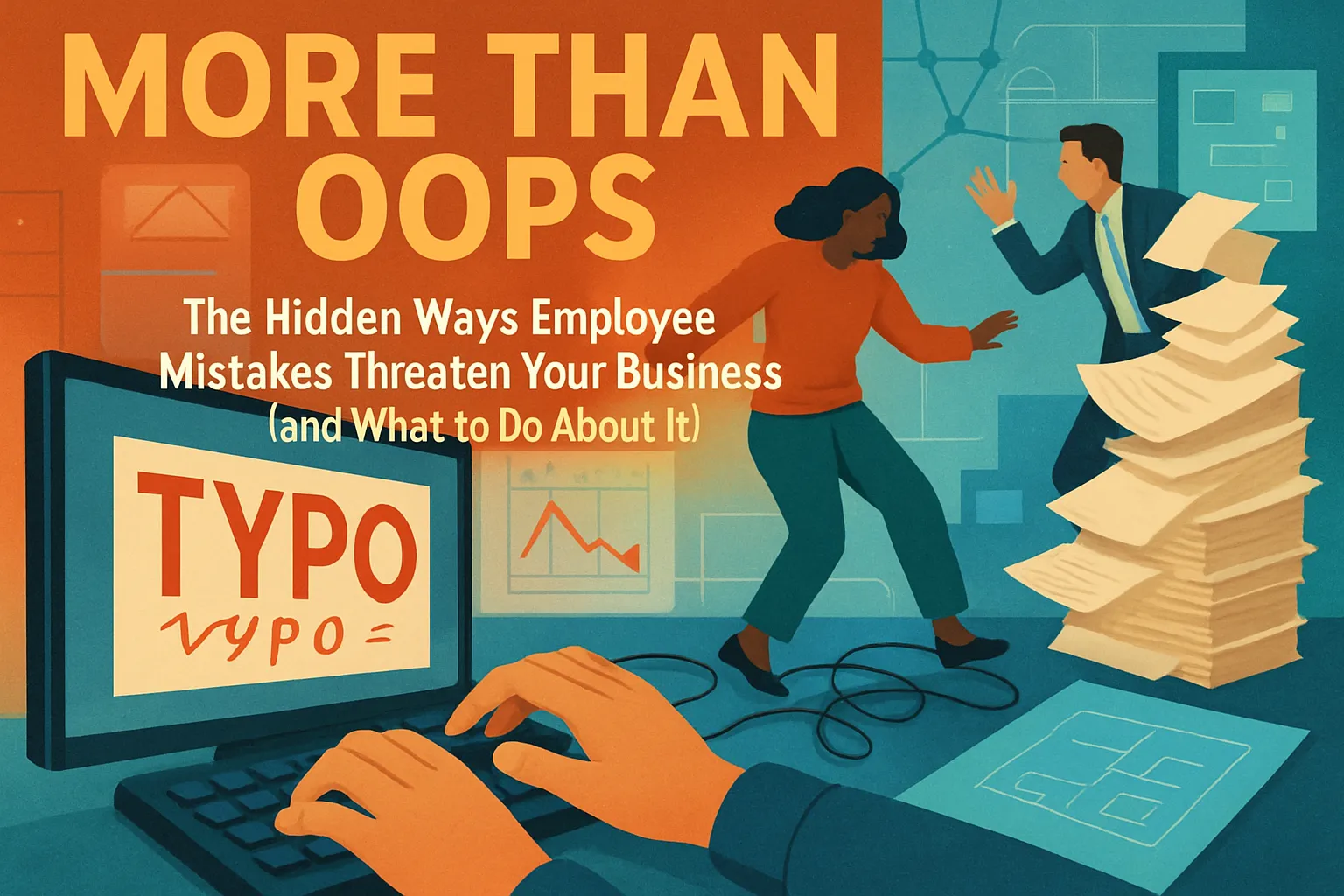I still remember the sinking feeling when I discovered my friend's business had fallen victim to a cyber attack. The impact was devastating, but what was even more shocking was that simple cyber hygiene practices could have prevented it. This incident lit a fire in me to unravel the complexities of cybersecurity for businesses and how small adaptations can lead to remarkable changes in safety. This blog is dedicated to helping others navigate through the murky waters of cyber threats with confidence and ease.
Understanding Cyber Hygiene: The Basics
In today's digital world, understanding cyber hygiene is crucial. But what exactly is it? Simply put, cyber hygiene refers to the practices that help maintain the health of your systems. Just like we take care of our physical health, we need to take care of our digital health. This is especially important for businesses. After all, a single breach can lead to devastating consequences.
Why is Cyber Hygiene Important for Businesses?
Let’s face it: we live in a time where cyber threats are everywhere. From phishing scams to ransomware attacks, the risks are real. Neglecting basic cyber hygiene can leave your organization vulnerable. Here are a few reasons why it matters:
- Protection of Sensitive Data: Businesses handle a lot of sensitive information. This includes customer data, financial records, and intellectual property. Poor cyber hygiene can lead to data breaches, which can be costly.
- Reputation Management: A breach can tarnish your reputation. Customers trust you with their information. If you fail to protect it, they might take their business elsewhere.
- Compliance Requirements: Many industries have regulations regarding data protection. Failing to adhere to these can result in hefty fines.
As a business owner, I often wonder: how much are we truly doing to protect our digital assets? It’s a question we should all ask ourselves regularly.
Common Vulnerabilities from Poor Cyber Hygiene
Now that we understand the importance of cyber hygiene, let’s discuss some common vulnerabilities that arise when it’s neglected:
- Weak Passwords: Using simple or easily guessable passwords is a major risk. It’s like leaving your front door wide open.
- Outdated Software: Failing to update software can expose you to known vulnerabilities. Cybercriminals often exploit outdated systems.
- Lack of Employee Training: Employees are often the weakest link in cybersecurity. Without proper training, they may fall for phishing scams or mishandle sensitive information.
In my experience, I’ve seen firsthand how a simple oversight can lead to significant issues. For instance, a colleague once clicked on a suspicious link in an email. It turned out to be a phishing attempt. Thankfully, we caught it in time, but it was a wake-up call for all of us.
What Cyber Hygiene Means in the Workplace
So, what does cyber hygiene look like in practice? It’s about creating a culture of awareness and responsibility. Here are some key practices:
- Regular Software Updates: Ensure that all software is updated regularly. This includes operating systems, applications, and antivirus programs.
- Strong Password Policies: Implement policies that require strong, unique passwords. Encourage the use of password managers.
- Employee Training: Regularly train employees on cybersecurity best practices. Make them aware of the latest threats.
As I reflect on my own workplace, I realize that we’ve made strides in improving our cyber hygiene. We hold regular training sessions and have implemented strong password policies. Yet, there’s always more to learn and improve upon.
"Cyber hygiene is as essential as regular health checkups; you never know what's lurking until you look closely." - Cyber Expert
In conclusion, maintaining good cyber hygiene is not just a technical requirement; it’s a fundamental part of running a successful business. By understanding its importance, recognizing common vulnerabilities, and implementing best practices, we can better protect our digital assets. Remember, in the world of cybersecurity, an ounce of prevention is worth a pound of cure.
The Role of Employee Training in Cybersecurity
When we think about cybersecurity, we often picture firewalls, encryption, and advanced software. But what about the people behind the screens? Employees are often the first line of defense in any cybersecurity strategy. Yet, many of them lack the necessary knowledge to recognize and respond to threats. This gap in knowledge can lead to devastating consequences for organizations.
Identifying Knowledge Gaps
Let’s face it: many employees don’t fully understand the risks they face every day. Here are some common gaps in knowledge:
- Phishing Scams: Many employees may not recognize a phishing email. They might click on a link, thinking it’s legitimate.
- Weak Password Practices: Employees often use simple passwords or reuse them across multiple accounts. This makes it easy for hackers.
- Social Engineering: Some employees may not be aware of how social engineering works. They might unknowingly give away sensitive information.
These gaps can be filled with effective training programs. But how do we create a culture of security within our organizations?
Effective Strategies for Employee Training Programs
Training isn’t just a one-time event. It should be ongoing and engaging. Here are some strategies that can help:
- Interactive Workshops: Instead of boring lectures, use interactive workshops. Role-playing scenarios can help employees practice what to do in real-life situations.
- Regular Updates: Cyber threats evolve quickly. Regularly update training materials to reflect the latest threats and trends.
- Gamification: Incorporate game-like elements into training. This can make learning fun and memorable.
- Real-Life Examples: Share stories of actual breaches. This makes the threat more tangible and relatable.
By implementing these strategies, we can empower employees to take cybersecurity seriously. As the saying goes,
“An organization is only as strong as its weakest link, often the employee who is not properly trained.” - Cybersecurity Analyst
Success Stories from Robust Training Programs
Many companies have seen the benefits of investing in employee training. Here are a few success stories:
- Company A: After implementing a comprehensive training program, Company A reduced phishing incidents by 70%. Employees became more vigilant and aware of potential threats.
- Company B: This company introduced gamified training modules. Employee engagement increased, and they reported a 50% improvement in password security practices.
- Company C: By sharing real-life breach stories, Company C created a culture of accountability. Employees felt responsible for protecting sensitive information.
These examples show that training is essential for enabling employees to recognize and respond to threats appropriately. It’s not just about protecting the company; it’s about creating a safer environment for everyone.
Building a Culture of Security
Regular training helps to build a culture of security within an organization. It’s not just a checkbox on a compliance list. It’s about fostering an environment where everyone feels responsible for cybersecurity.
How can we achieve this? Here are some tips:
- Encourage Open Communication: Create a space where employees can report suspicious activities without fear of repercussions.
- Lead by Example: Management should participate in training. When leaders prioritize cybersecurity, employees will follow suit.
- Recognize and Reward: Acknowledge employees who demonstrate good cybersecurity practices. This reinforces positive behavior.
In conclusion, employee training is not just a necessity; it’s a vital part of any cybersecurity strategy. By addressing knowledge gaps, implementing effective training programs, and sharing success stories, we can create a more secure workplace for everyone.
Building Business Protection Strategies: An Essential Blueprint
In today’s world, where technology is at the forefront of everything we do, protecting our businesses from cyber threats is crucial. The stakes are high. Cyber threats can disrupt operations, damage reputations, and lead to significant financial losses. So, how can we safeguard our businesses effectively? Let’s dive into the critical elements of business protection measures against cyber threats.
Understanding Cyber Threats
First, we need to recognize what we’re up against. Cyber threats come in various forms, including:
- Malware
- Phishing attacks
- Ransomware
- Data breaches
Each of these threats can have devastating effects. For instance, a ransomware attack can lock you out of your own data, demanding a hefty ransom to regain access. It’s like being held hostage, but in the digital realm.
Critical Elements of Business Protection
To combat these threats, businesses need a multi-layered approach to cybersecurity. This includes:
- Software Solutions: Invest in robust antivirus and anti-malware software. These tools act as your first line of defense.
- Policies and Procedures: Establish clear cybersecurity policies. Make sure everyone in your organization knows the rules.
- Employee Training: Regularly train employees on cybersecurity best practices. They are often the first line of defense against cyber threats.
Think of it this way: just like a castle needs strong walls, a business needs solid cybersecurity measures to protect its valuable assets.
Enhancing Business Resilience
Integrating cybersecurity solutions can significantly enhance business resilience. But what does that mean? It means that when a cyber incident occurs, your business can recover quickly and effectively. Here’s how you can achieve this:
- Regular Backups: Always back up your data. This way, if you do face a cyber attack, you won’t lose everything.
- Incident Response Plan: Develop a clear plan for responding to cyber incidents. This should include who to contact and what steps to take.
- Continuous Monitoring: Implement systems that continuously monitor your network for unusual activity. Early detection can prevent major breaches.
As an industry leader once said,
"In the digital age, proactive business protection is not an option, but a necessity."This couldn’t be more accurate.
Actionable Steps for Cybersecurity Enhancement
Now that we understand the critical elements and how to enhance resilience, let’s look at some actionable steps you can take to improve your cybersecurity posture:
- Conduct a Risk Assessment: Identify your vulnerabilities. What areas are most at risk?
- Implement Strong Password Policies: Encourage the use of complex passwords and change them regularly.
- Use Multi-Factor Authentication: This adds an extra layer of security. Even if a password is compromised, your data remains safe.
- Stay Updated: Regularly update software and systems. Cybercriminals often exploit outdated software.
By taking these steps, we can create a safer environment for our businesses.
Conclusion
In conclusion, building effective business protection strategies is not just about having the right tools. It’s about creating a culture of cybersecurity awareness. A comprehensive cybersecurity strategy is vital for any modern business. As we’ve discussed, investing in cybersecurity can lead to long-term savings by preventing breaches and data loss. Remember, the digital landscape is constantly evolving, and so should our defenses. Let’s stay aware, stay smart, and stay secure. Together, we can build a safer future for our businesses.
TL;DR: Cyber hygiene is critical for business safety, and effective training for employees is key. MyCyberIQ emphasizes practical strategies to ensure a secure digital environment.



